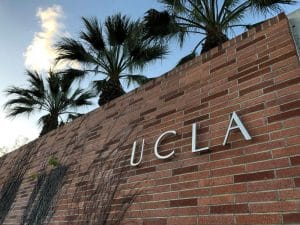If you’ve always dreamed of attending the Massachusetts Institute of Technology (MIT), but the idea of the cost of tuition made you hesitate, here’s some great news! Starting in 2025, MIT is offering a tuition-free education for families earning below $200,000.
Let’s dive into how this works and what it could mean for your future.
- How MIT’s Free Tuition Works
- How Does MIT’s Financial Aid Compare to Other Universities?
- How to Apply for Free Tuition at MIT
- Why Choose MIT?
- Frequently Asked Questions
- Takeaways
How MIT’s Free Tuition Works
This Fall 2025, MIT will offer free tuition to undergraduates from families earning below $200,000. Here’s how it works:
- If your family makes under $100,000, you won’t pay a dime for tuition, housing, dining, or personal expenses.
- If your family earns between $100,000 and $200,000, you’ll pay a sliding scale based on your income. The maximum you might pay is around $23,970, which covers housing, food, fees, and personal expenses.
MIT’s new financial aid program is designed with your family’s income in mind, making a world-class education accessible no matter your background.
What’s more, MIT doesn’t factor in your family’s ability to pay when considering your application. This means that no matter your financial situation, you’ll have the same chance of being admitted as anyone else. Once you’re in, they make sure you can afford to attend.
To put it in perspective, the average household income in the U.S. is about $87,864, while the cost of attending a public university in-state is roughly $24,030 per year. Compare that to MIT, where the financial aid program ensures most families pay significantly less.
Attending MIT can be more affordable than attending a public university, so don’t let concerns about cost hold you back. Explore your options and see how affordable an MIT education can be!
If your family’s income is on the higher side of the spectrum, you might still qualify for need-based financial aid. And don’t forget that MIT’s financial aid program is designed to help you graduate debt-free, so you won’t have to worry about taking out massive student loans.
What’s the cost of attending MIT?
Now, let’s get into the numbers to see how much you’ll save when you avail of MIT’s free tuition. The total cost of attending MIT is estimated at $85,960 for the 2024-2025 academic year. Here’s the breakdown:
| Cost Item | Amount | Details |
| Tuition | $61,990 | Covers the fees for enrollment in courses and programs. |
| Student Life Fee | $406 | Covers student clubs, events, sports, fitness programs, gym access, fitness classes, and student group trips. |
| Housing | $13,060 | First-year students must live on campus. The cost is based on a double room ($6,530 per semester). Financial aid is calculated using this rate. |
| Food | $7,220 | Covers meals on campus. The most expensive dining plan is assumed, costing around $7,220 annually. |
| Books, Supplies, and Personal Expenses | $3,284 | Estimated at $910 for books and supplies and $2,374 for personal expenses (clothes, laundry, etc.). |
All in all, that’s a total of $85,960 for the full year. But remember, this is the total cost before any financial aid. You won’t pay any of this if your family’s income is below $100,000! And if your family earns between $100,000 and $200,000, you’ll pay a reduced amount based on your financial aid package.
How Does MIT’s Financial Aid Compare to Other Universities?
MIT stands out for offering one of the most generous financial aid programs out there. They meet 100% of the demonstrated need for every student, and their aid packages don’t include loans.
This means you can graduate from MIT without the burden of debt. In fact, 87% of MIT students graduate without loans, which is a huge advantage when you’re starting your career.
But how does this compare to other top universities? Check out this table for a clearer picture:
| School | Cost of Attendance | Average Aid Award | Aid Policy |
| Harvard | $84,000 | $62,000 | Free tuition for families earning under $85K; sliding scale up to $150K. |
| Stanford | $82,000 | $70,000 | Free tuition, room, and board for families earning under $100K; aid up to $150K. |
| Princeton | $81,000 | $67,000 | Free tuition, housing, and meals for families earning under $100K; no loans. |
| Yale | $83,000 | $68,000 | Free tuition for families earning under $75K; sliding scale up to $200K. |
| Duke | $81,000 | $65,000 | Free tuition for families earning under $150K; full cost covered for under $65K. |
| Columbia | $85,000 | $76,000 | Free tuition for families earning under $150K; full cost covered for low-income families. |
| UChicago | $84,000 | $68,000 | Free tuition for families earning under $125K; full cost covered for under $60K. |
| Rice | $76,000 | $59,000 | Free tuition for families earning under $130K; full cost covered for under $65K. |
| Vanderbilt | $79,000 | $59,000 | Free tuition for families earning under $150K; full cost covered for under $60K. |
So, what does this mean for you? If you’re considering MIT, their financial aid program is one of the most generous in the nation. Starting in 2025, families earning under $200,000 won’t pay tuition, and families making less than $100,000 will receive a fully covered package, including housing, dining, and personal expenses. This puts MIT’s offer on par with, and in many cases ahead of, other elite universities.
Unlike schools like Stanford or Princeton, which also provide free tuition for families earning under $100,000, MIT takes its policy a step further by ensuring no loans are included in its financial aid packages. While other schools, such as Harvard and Yale, cap free tuition at lower income thresholds or offer sliding scales with some parental contribution, MIT’s policy stands out for its clarity and inclusivity. For example, Yale’s free tuition threshold is $75,000, significantly less than MIT’s $100,000 cutoff for full coverage.
What does this mean for you? If your family earns under $100,000, attending MIT could be more affordable than many public universities, where costs can add up to $24,000 annually. MIT’s need-blind admissions process ensures that your ability to pay won’t affect your chances of acceptance. Once you’re in, they’ll ensure you can afford to attend, making your dream of a world-class education a reality without the burden of debt.
How to Apply for Free Tuition at MIT
Applying for financial aid at MIT may seem daunting, but don’t stress. We’ve got you covered! Whether you’re a high school student in the U.S. or an international applicant, this guide will walk you through everything you need to know to apply for financial aid and potentially cover the full cost of attending MIT.
Step 1: Get your documents ready.
To start the process, you’ll need to gather some key documents. These will help MIT understand your financial situation and determine the aid you need.
For U.S. students:
- CSS Profile. The College Scholarship Service Profile is a tool provided by the College Board that helps MIT assess your eligibility for need-based scholarships.
- FAFSA. The Free Application for Federal Student Aid will help determine your federal or state aid eligibility.
- Parental Tax Returns/Income Documentation. MIT requires your parent’s tax returns or other income documentation, which should be submitted securely via the College Board’s IDOC platform.
For international students:
- CSS Profile. As with U.S. students, international students need to fill this out.
- Parental Tax Returns. Submit your parent’s tax returns or income documentation, along with a translation, if not in English, via IDOC.
Step 2: Know your deadlines.
Time matters when it comes to financial aid, so make sure you meet the application deadlines!
- Early Action. Submit your application by November 30 and receive your financial aid offer in mid-January.
- Regular Action. Submit by February 15 and get your offer in mid-March.
- Transfer applicants. Your financial aid offer will be sent after the admissions decision.
If you miss a deadline, don’t worry. MIT accepts late applications, but you might receive your offer later than others. Just submit your materials as soon as possible; the earlier, the better!
Step 3: Apply online.
Once you have your documents, head to MIT’s financial aid website and start the application process. The steps are straightforward:
- Fill out the CSS Profile on the College Board website.
- Submit your parent’s tax documents through the IDOC platform.
- If MIT needs anything else, they’ll reach out to you directly.
Step 4: What happens next?
Once your documents are submitted, MIT will review them and provide you with a financial aid offer. You can view your offer through the MIT Application Portal for prospective first-year students or the Online Financial Aid System if you’re a current student.
If you’re a DACA or undocumented student, don’t worry. MIT meets 100% of your demonstrated need with a scholarship that doesn’t need to be repaid.
Step 5: Keep in touch
MIT’s financial aid counselors are ready to help if you ever feel lost or have questions. Contact them if you’re unsure about any part of the process, and they’ll guide you.
Why Choose MIT?
Dreaming of attending MIT but worried about the cost? Don’t stress MIT is all about making your education affordable. They work with families to create personalized financial aid plans, so you’ll get exactly what you need to make your dream a reality.
Need-blind admissions + 100% aid
Here’s the deal. MIT doesn’t care about your family’s finances when deciding if you’re in. They’re one of the need-blind U.S. schools, meaning everyone gets a fair shot. Even better, MIT promises to meet 100% of your demonstrated financial need if accepted. About 60% of students get aid, so chances are you’ll get help too!
Free tuition starting in 2025
This is huge. Starting in 2025, families earning under $200,000 won’t pay tuition. For families making under $100,000, MIT won’t expect any parent contribution. They’ll even help with costs like housing and meals. You can focus on your studies, not your wallet.
No loans = no debt
MIT doesn’t do loans in its financial aid packages. Instead, you can work during the school year to help cover books and personal expenses. Most students take on cool, paid research projects, which fund their needs and build real-world experience. Plus, 87% of MIT students graduate debt-free!
Amazing post-grad opportunities
Graduating from MIT sets you up for success. With an average starting salary of $126,438, MIT grads earn way above the national average. And with MIT’s stellar reputation, your degree will open doors everywhere.
So, if you’re ready to chase your dreams, MIT has your back every step of the way, financially and academically.
Frequently Asked Questions
1. Who gets to take advantage of MIT’s free tuition offer?
Starting in 2025, if your family earns under $200,000, you’re eligible for free tuition at MIT. And if your family makes less than $100,000, you won’t have to pay for tuition, housing, food, or personal expenses either!
2. How much will my family have to pay if we earn over $100,000?
Families earning between $100,000 and $200,000 will pay a reduced amount based on their income. The highest they might pay is $23,970, which covers housing, dining, and other living expenses.
3. Is MIT’s financial aid based on merit or need?
MIT’s financial aid is need-based, meaning they’ll assess your family’s financial situation to determine how much assistance you’ll receive. Your academic performance doesn’t affect your financial aid eligibility.
4. Will I need to take out loans for my education at MIT?
Nope! MIT doesn’t include loans in its financial aid packages, so you won’t have to worry about student debt when you graduate. It’s a huge relief knowing you can focus on your studies without that extra stress hanging over you.
5. How can I estimate my financial aid?
MIT has an online calculator that can help you estimate your financial aid eligibility based on your family’s income and other financial factors. It’s a super helpful tool to give you an idea of what kind of support you might receive before you even apply.
Takeaways
- Starting in 2025, MIT will offer free tuition for students from families making under $200,000.
- Financial aid packages are designed to make MIT affordable for all students, with many families paying far less than the total cost.
- The total cost of attendance for a year is around $85,960, but financial aid can reduce this significantly for most students.
- MIT doesn’t include loans in its financial aid packages so students can graduate debt-free.
- Need extra help with your application for MIT and their free tuition? Check out AdmissionSight’s Private Consulting Program to get expert advice and guidance.














































